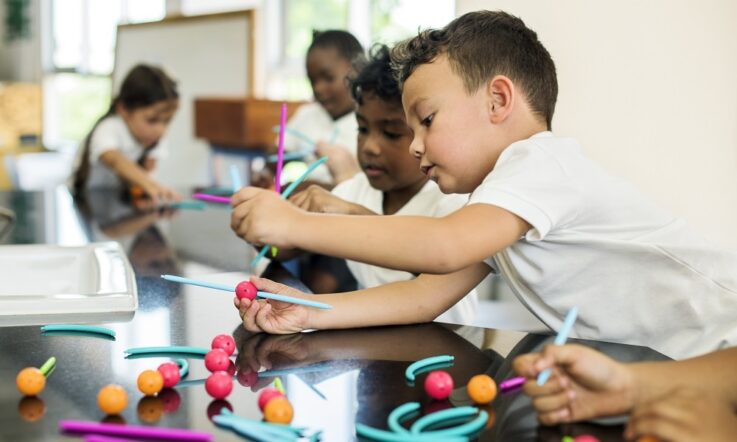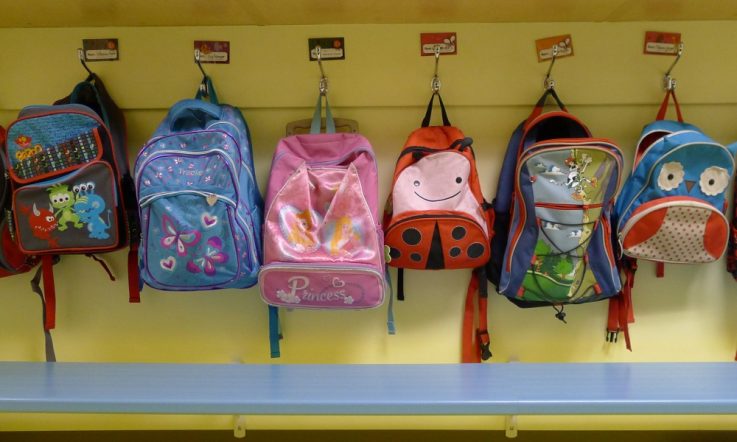It’s common for schools to begin supporting first year primary school students and their families through the transition process before the school year begins. But, what about students who enrol unexpectedly at different points throughout the school year? How can you, your colleague and the school community effectively support these students through the transition process?
Emeritus Professors Sue Dockett and Bob Perry from Charles Sturt University have looked at the transition experiences of 30 primary schools in Australia welcoming students to their first year of school. They detail their findings in the paper ‘Invisible transitions: Transitions to school following different paths’, published in the Australasian Journal of Early Childhood.
They found that each school expected to welcome children who have enrolled late or unexpectedly every school year, and they labelled this event as an ‘invisible transition’. Despite the school’s expectations, Dockett and Perry found only ad hoc arrangements are usually made to accommodate these students.
‘Everyone deserves an effective transition. And the children that just turned up, they were getting a very different transition than the ones who had been through the normal situation. And we decided that we should have a look at that and just see how that might be changed,’ Perry tells Teacher.
‘It doesn’t matter that these students are coming at unexpected times, they still have a right to the same sort of positive transition experiences that help them belong with the school community as anybody else. We can’t just ignore them and say “tough luck, fit in”, because that in itself is likely to create larger problems down the road,’ Dockett shares with Teacher.
How common are invisible transitions?
To find out more about their experiences of supporting children who have arrived at their school unexpectedly, two questions were asked to the school principals and teachers involved in the research: What is the scope of invisible transitions in the school? And, what challenges and opportunities arise from invisible transitions in the school?
Each school said invisible transitions had occurred in their first year cohort, ranging from 4 per cent of all students to 68 per cent of all students. Across these transitions were many different pathways: children arriving at school for the first time on the first day of term; students being enrolled in the first few weeks; and, students arriving later in the year.
‘Sometimes these pathways were related to family disruption, limited familiarity with enrolment requirements or family discomfort in school environments. Across all schools, children who were not enrolled in ECE (early childhood education) were the most likely to experience invisible transitions,’ the journal paper reads.
Strategies to support students who enrol unexpectedly
Schools outlined a number of different strategies to support children arriving at their school unexpectedly:
- Having a designated transitions staff member to ‘check in’ with the family and child at regular intervals
- Involving student buddies
- Building support networks among parents
- Having ‘welcome packs’ available
- Staff across the school being informed about new children and their strengths and interests
- Pedagogical approaches that support play
- Providing opportunities for children to build relationships
Dockett and Perry say there are a number of reasons appointing a designated transitions staff member is a particularly useful strategy. ‘It highlights in the school that this is an issue in the school that we’re going to deal with. How that happens will vary considerably … I don’t think we want to set this as a process in stone, it really needs to be individualised and responsive, but that can only happen when, as a school, you’re talking about it,’ Dockett explains.
‘The key to this is dealing with the individual cases,’ Perry adds. ‘Perhaps having a framework in which you can do that, and certainly having someone to look after it is a very useful part of that framework.’
The use of welcome packs can also be effective. Schools involved in the research who used these usually include information about the school and, crucially, a school shirt or cap. Many families will turn up not knowing what the school uniform is, Perry explains, and may not know where to purchase it. So, giving the child the opportunity to begin school in the right uniform can help them feel they belong and don’t stand out.
Another strategy to ensure children feel as though they belong in the school community, is carefully considering when the child has their first day in the classroom. Some schools shared with Dockett and Perry that although many families arrived expecting for their child to stay and start school that same day, they would instead ask for the child to begin school the following day.
This would give the child’s new teacher the opportunity to rearrange the classroom to have a spare seat for them, and let their peers know they will be arriving so a buddy can be arranged.
‘I would think that the more important thing is that, as a school community, people are talking about it. And knowing that it’s going to happen, and planning in some way for it,’ Dockett says.
References and related readings
Dockett, S. & Perry, B. (2021). Invisible transitions: Transitions to school following different paths. Australasian Journal of Early Childhood. DOI: 10.1177/18369391211009698
Support for kids’ education – this resource from the Australian Government Department of Defence discusses the role of Australian Defence Force Education Liaison Officers (EDLOs) who assist defence force children as they make their multiple transitions. https://defence.gov.au/members-families/Family/kids/education.asp
Reflect on how your school community prepares for the possibility of students making invisible transitions to your school, and consider some of the strategies used by schools in this study to support students making invisible transitions: having welcome packs available which includes a school shirt and cap; designating a staff member to communicate with families; and providing opportunities for students to build relationships.
Do you utilise any of these strategies? Could you implement any of these strategies for the first time in 2022? Which members of staff need to be involved in this discussion, and what material resources will you need?



